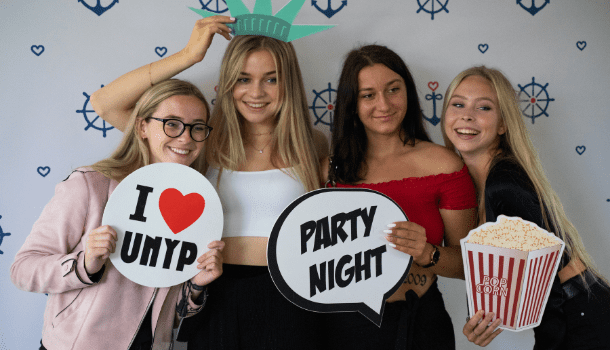Five Tips on How to Return to “Normal” and Avoid Post-Pandemic Anxiety

Well, it’s been a long year and a half, and it would appear that we are finally (if slowly) emerging from the worst of the pandemic era. The education system seems to be trying to re-establish itself with more structure than we have seen since early 2020, and the promise of actually being able to attend classes once again becoming more and more of a reality. Some people of influence have even ventured to use the word “normal” to describe what the foreseeable future might hold in store for students who have grown accustomed to being sequestered in their own environments, remote from the social interaction (both in and out of the classroom) that existed before the virus.
But a year and half is a long time. In fact, it’s enough time for us to lose some of our short-term memories of how we used to enjoy gathering for the collective learning process, and to unwittingly grow accustomed to a more solitary regimen of virtual class “attendance” or even the sterility of reviewing recorded Zoom sessions. “Virtuality” in academia became the new reality. Human interaction suffered, as did (according to some) the overall richness of the education process.
Reportedly, however, much of this is going to change. At least some of us will be in the classroom when classes begin for the Fall semester. Other colleagues, whose initial physical presence has been delayed by lingering travel restrictions, visa issues, etc., will probably join us later in the term. Thus, a possible return to “normal?”
Not surprisingly though, some of us are still wary of a quick return to “normal.” Quite a few of us have grown accustomed to the relative safety of our own spaces, the freedom of doing our own learning at our own pace, being able to avoid public locales and public transport, or even the blissful solitude of…being alone. Whatever the case, for some of us the return to normal will require venturing back into partially forgotten territory, and a new protocol of out-of-practice routines that may feel unwelcome.
Nevertheless, accepting that change is a constant, there will eventually be a new reality in the way education is delivered – a “new normal” – to which we must become accustomed. Some of us will shift easily as we wind our way through the new measures and procedures that will allow us to proceed safely. Others, however, may find it a bit challenging as we readjust the physical and mental templates to meet our educational reality.
There is nothing wrong with feeling challenged by this process. It is…normal. Human beings mostly find change to be suspect and fraught with the perils of the unknown. We all like predictability. Yet, change is inevitable, and our slow re-emergence from the COVID situation will be no different.
For those of us who find this change to be of particular concern, there are things we can do to ease the transition. There are various models we can consider, but the popular U.S. morning TV show, Good Morning America, offers us five techniques we can use to help soothe the stresses and anxieties of returning to a post-COVID world.
1. First, be patient with yourself! In some cases, you’ve been through a lot! Have you personally suffered, or do you know someone who did? Were the lockdowns injurious to your overall well-being or the interests of your loved ones? In brief, we’ve all endured injury of one type or another, but some of us more than others. Therefore, don’t be too hard on yourself if you find the transition back to “normal’ difficult, even angering. Maybe you still fear the virus and its long-lasting effects? If so, you do so for a reason – YOUR reason. Don’t let anyone tell you that you are being “silly” to remain cautious when, in reality, no one knows for sure what a year from now may look like. Yes, there is cause for guarded optimism and we are happy that the coming semester will unfold in a hybrid format, but don’t think that “there must be something wrong with you” if your own past experience gives you cause for pause.
2. Set small goals, at first: OK, it might be a little hard to simply come out and begin to mingle freely again without concern, or to return to your old habits as if nothing had happened. So, why go at it so hard, so fast? Why not take the time to plan your re-emergence as you would any other important decision in your life, and take your approach in a calculated manner? To use the Olympic metaphor, instead of going directly for the gold, why not just try to make the team first? Then, strive for the bronze, then the silver and THEN the gold! What’s your hurry? Yes, you will need to get some critical things done, but rushing it all at once might not be the best option. Think on it! Prioritize it! Plan it! Then, do it.
3. Don’t compare yourself to others: Returning briefly to Point 1 above, your reality is not like everyone else’s! Some people will be able to get back into the groove faster than you, most likely because their experience with the COVID issue was different, and possibly milder, than yours. So, pay no attention to anyone else’s response or solution. You are yourself, and they are themselves, so attend to yourself. Though others may love you and want to be of help by giving advice, do what is right for YOU! There are polite ways to tell others to mind their own business. Always remember that NO ONE can take care of you better than you. Your concerns, your pain, your experience…are yours. So, be true, and act true, to yourself.
4. Practice deep breathing: OK…after doing all of the above…you still have an anxiety attack. This happens. After many months of having fear instilled into you by the government, media and society in general, it’s not unusual for an occasional panic attack to happen, even after the aforementioned influencers have, at least in some measure, reversed themselves. So, what do you do? For those of us who are accustomed to meditation, this can be a solid and prophylactic resource for calm. However, most of us have little experience with meditation, per se, though almost all of us can use one of meditation’s core techniques to inspire calm and to induce the relaxation of stress, and momentary anxiety: Deep breathing. How do you do this? When you feel an anxiety attack coming on simply close your eyes, envision in your mind a peaceful scene, and breathe deeply; breathe rhythmically and in a controlled manner. No rapid, panicky bursts of respiration, but a truly deliberate effort to bring your breath, and therefore your mind, into your desired state of calm. Try it, it works!
5. Pay attention to your thoughts: An orderly and calm re-emergence into the world may require a bit of vigilance on your part. Yes, we want to gradually move back into the realm of “normal”, but we are still human beings. This means that the occasional, incompatible, and inconsistent thought may pop into our heads. Though it is easier said than done, we must be prepared when disturbing thoughts and memories enter our minds – thoughts that are contrary to our re-emergence desires – and be ready to counter them. First, know that unsettling thoughts are normal. Sometimes they hit us during the day, but more often they occur at night in the form of the “beasties” that can keep us awake. Knowing in advance that this is going to happen will certainly be helpful, so be prepared! What do you do? Simply stay the course, stick with the plan, and come out on the other side whole and ready for the world once again!
In the end, what is Good Morning America’s (GMA) message? The message is that you don’t have to be a victim of circumstances, even in the wake of a circumstance that is as long-lasting and serious as the COVID scare!
Bringing it back to our UNYP/ESC context, do you want to return to a sense of normalcy when permitted to do so, and get your academic life back? Although GMA’s five points may not cover all of the bases, they do indeed offer a few suggestions to kick-start the healing process.

Harold Neal
Related Articles
UNYP Chronicle Newsletter
The e-mail address you provide will be used only to send you the newsletter. Your privacy is important to us.
For more information download our UNYP Brochure.

Contacts
University of New York in Prague
Londýnská 41, 120 00 Praha
ID no: 25676598
Phone:
+420 224 221 261
![]() Skype
Skype
Email: unyp@unyp.cz







